Jules Aarons
Original Exhibition Prints From Aarons’ 1951 Institute of Contemporary Art Solo Exhibit
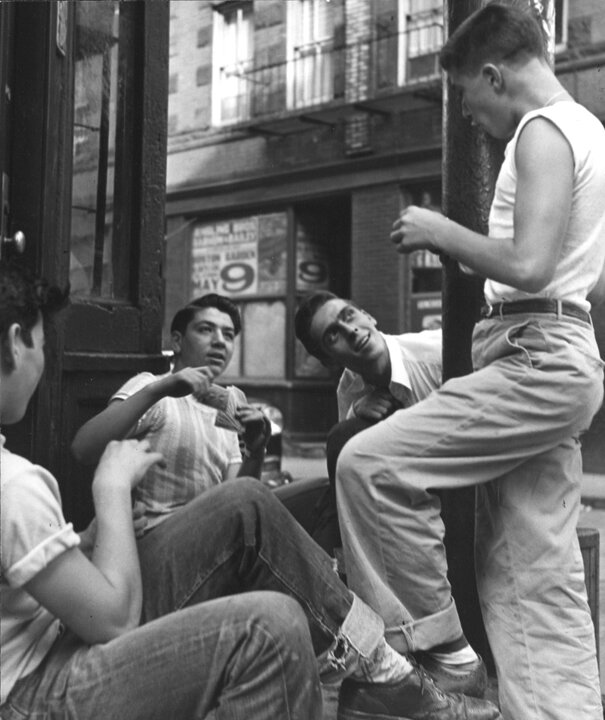
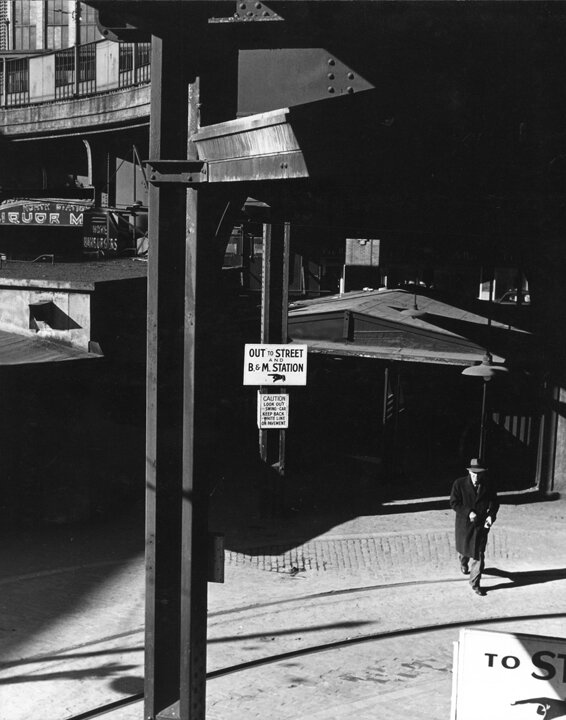
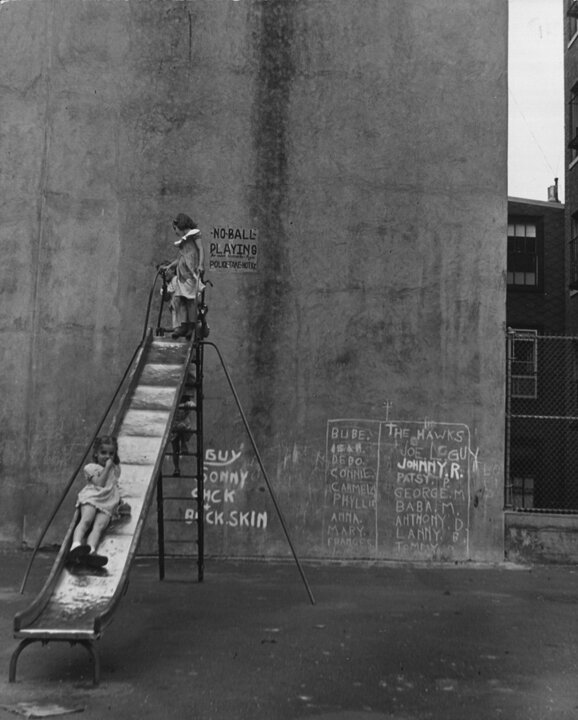
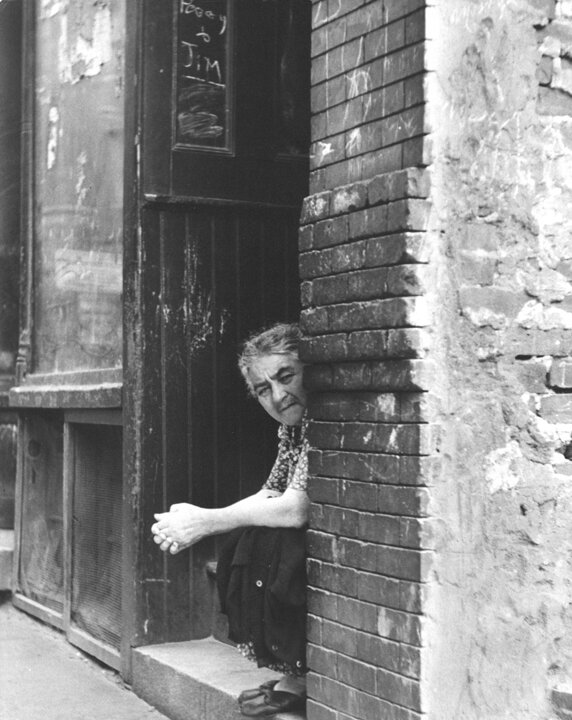
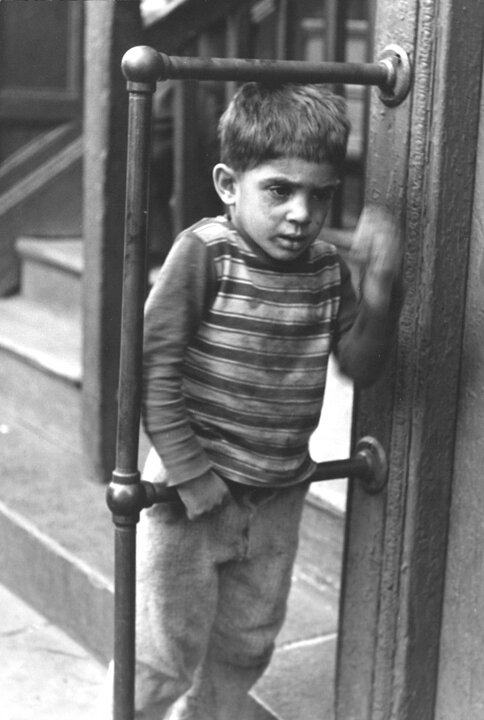
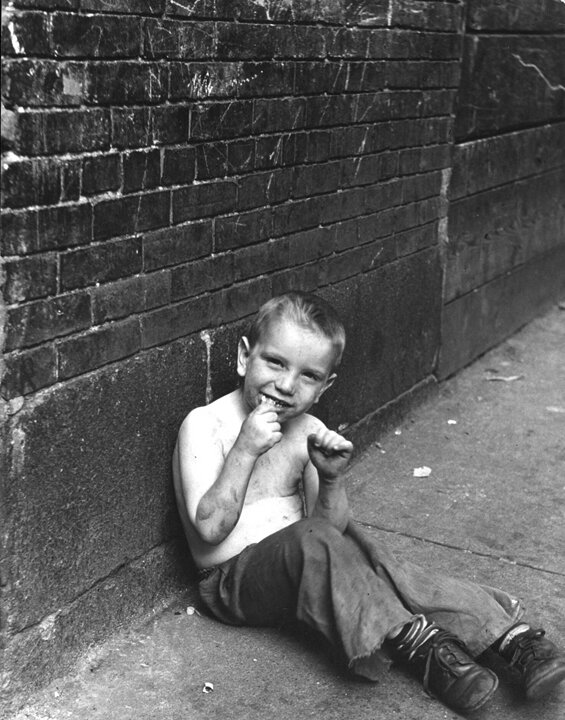
Dr. Jules Aarons began exhibiting his poignant observations of street life during a period when very few art galleries and museums showed photography. From the late 1940s through the 1970s, his photographs appeared in many venues including solo exhibits at the ICA Boston, MIT, The DeCordova Museum, The Farnsworth Museum, Gallery of the Cape Art Center, George Eastman House, Librarie Mistral (Paris), The Underground Gallery (NYC) and regularly at Boston’s Carl Siembab Gallery (one of the earliest and most significant galleries that respected and exhibited photographs). The images in this exhibit are the prints that were in his solo exhibit at the Institute of Contemporary Art in 1951.
Dr. Aarons's photographs are notable for their liveliness, informality, and emotional warmth. He excelled at street photography: casual documentary images of urban life. -Jules Aarons Obituary by Mark Feeney Boston Globe, 11/24/08
In 1947, I began to take black-and-white photographs with the aim to document Boston, its streets and its people, while also developing my own style. I resolved to capture the day-to-day life experiences of the people, avoiding scenes of poverty. My basic approach to street portraits was to avoid intruding on the scene. I knew that the dynamics of people whose social relationships involved their neighbors and the streets could be a source of creativity. -Jules Aarons
Clara Wainwright
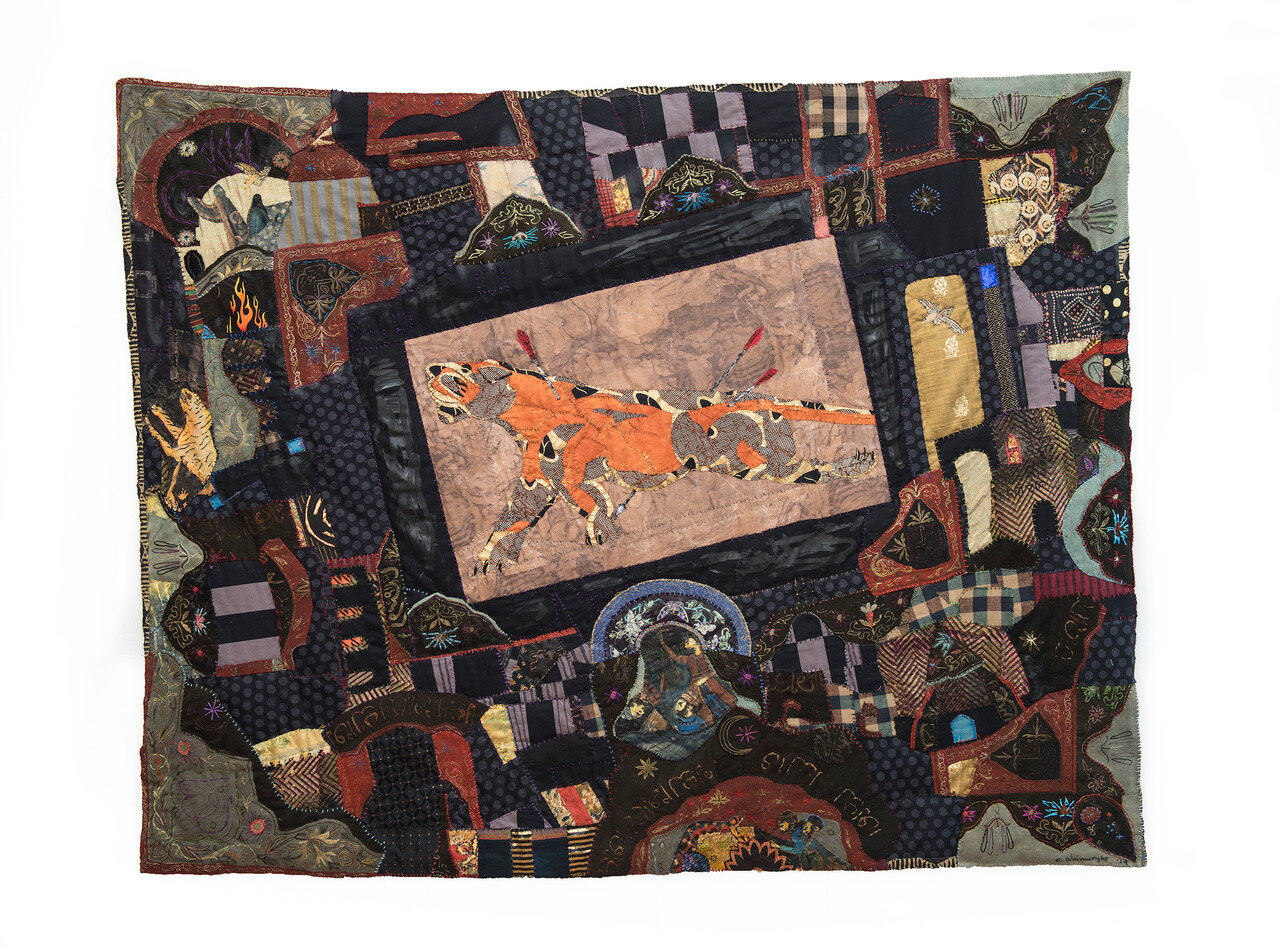
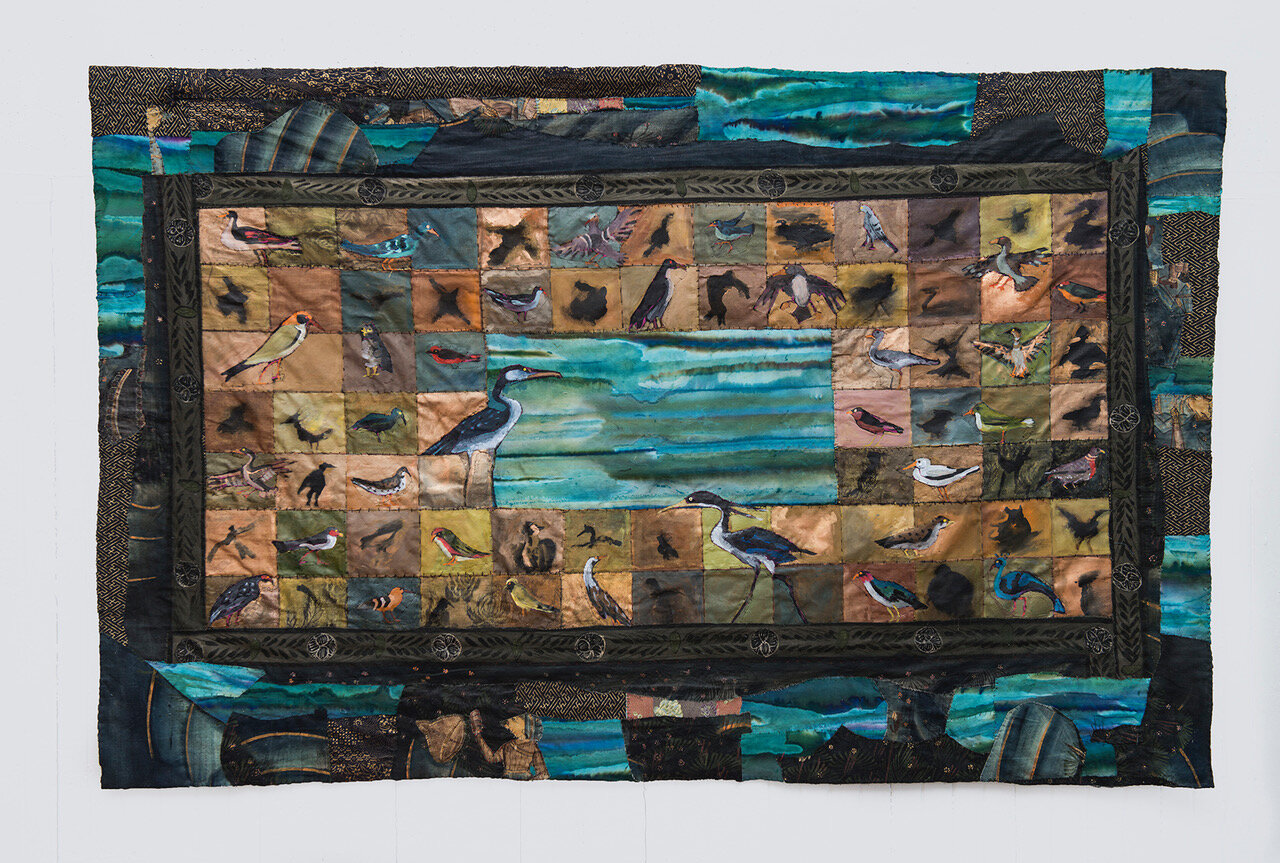
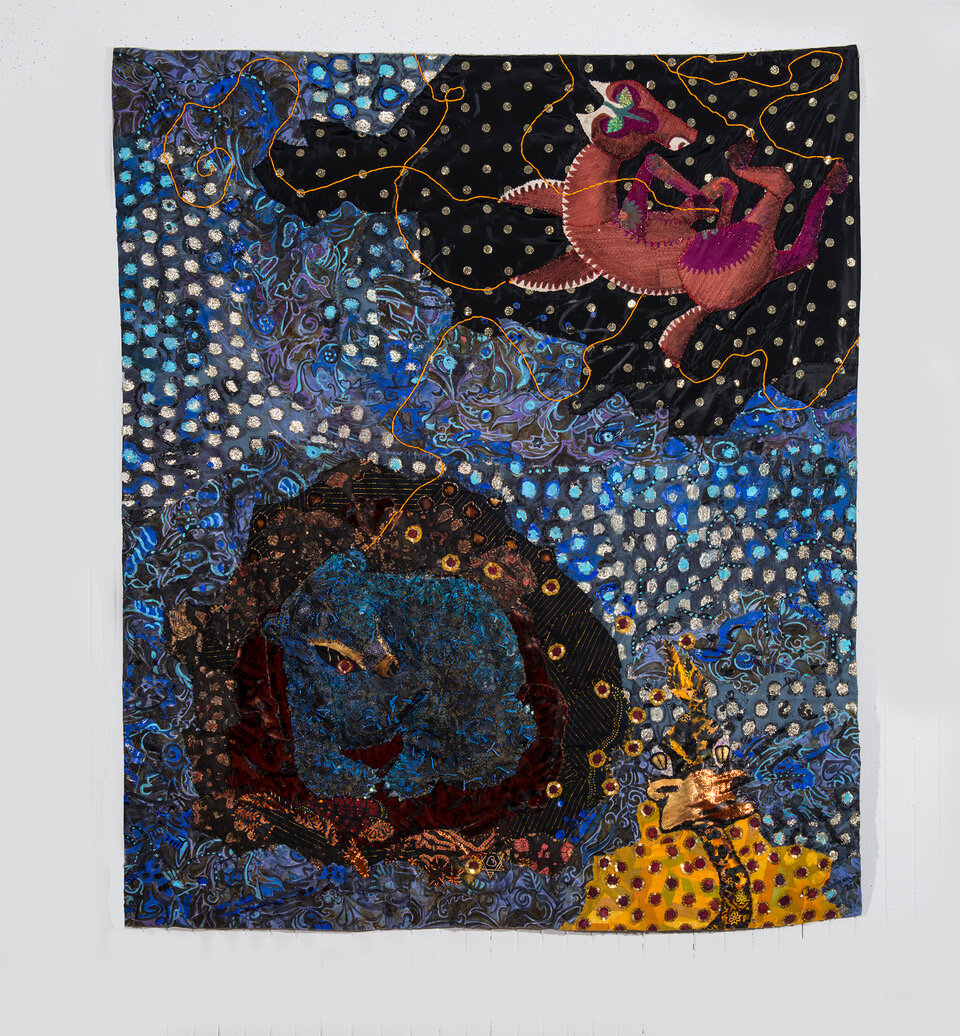
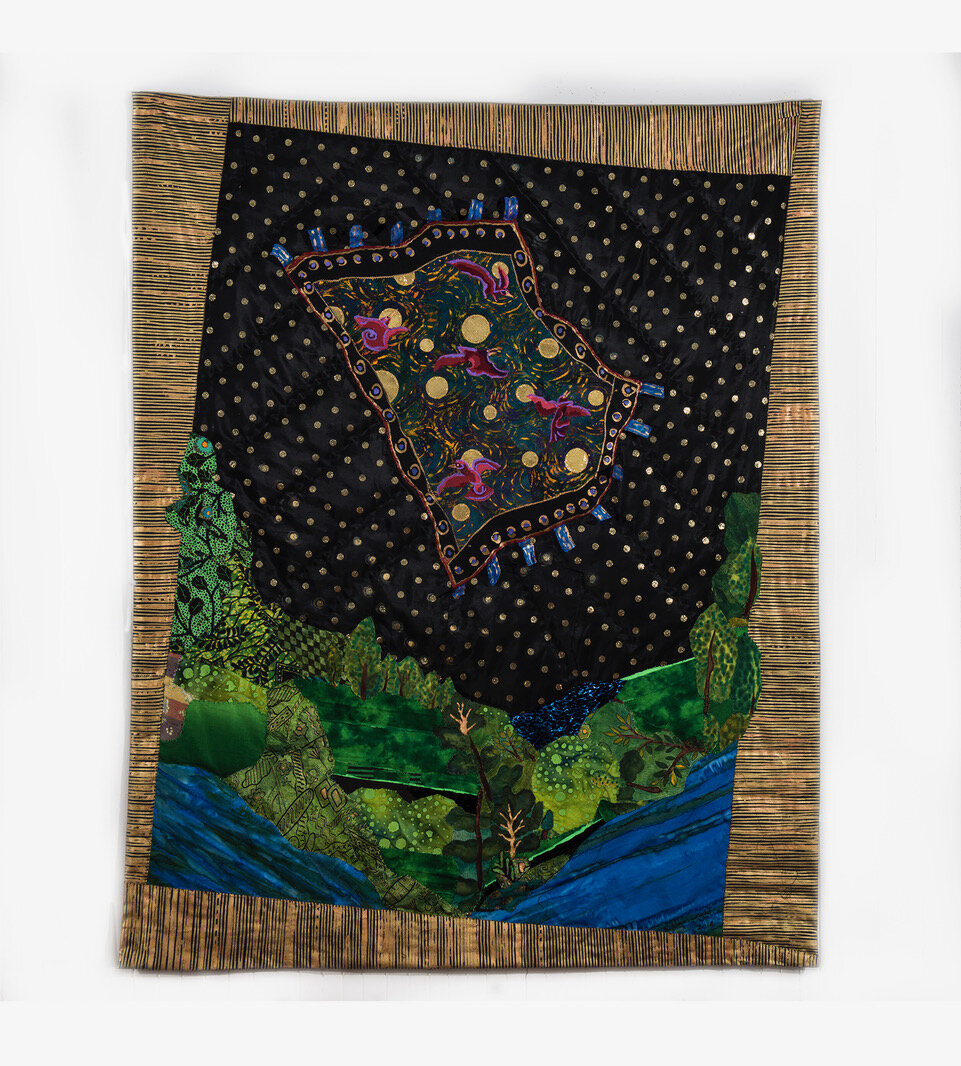
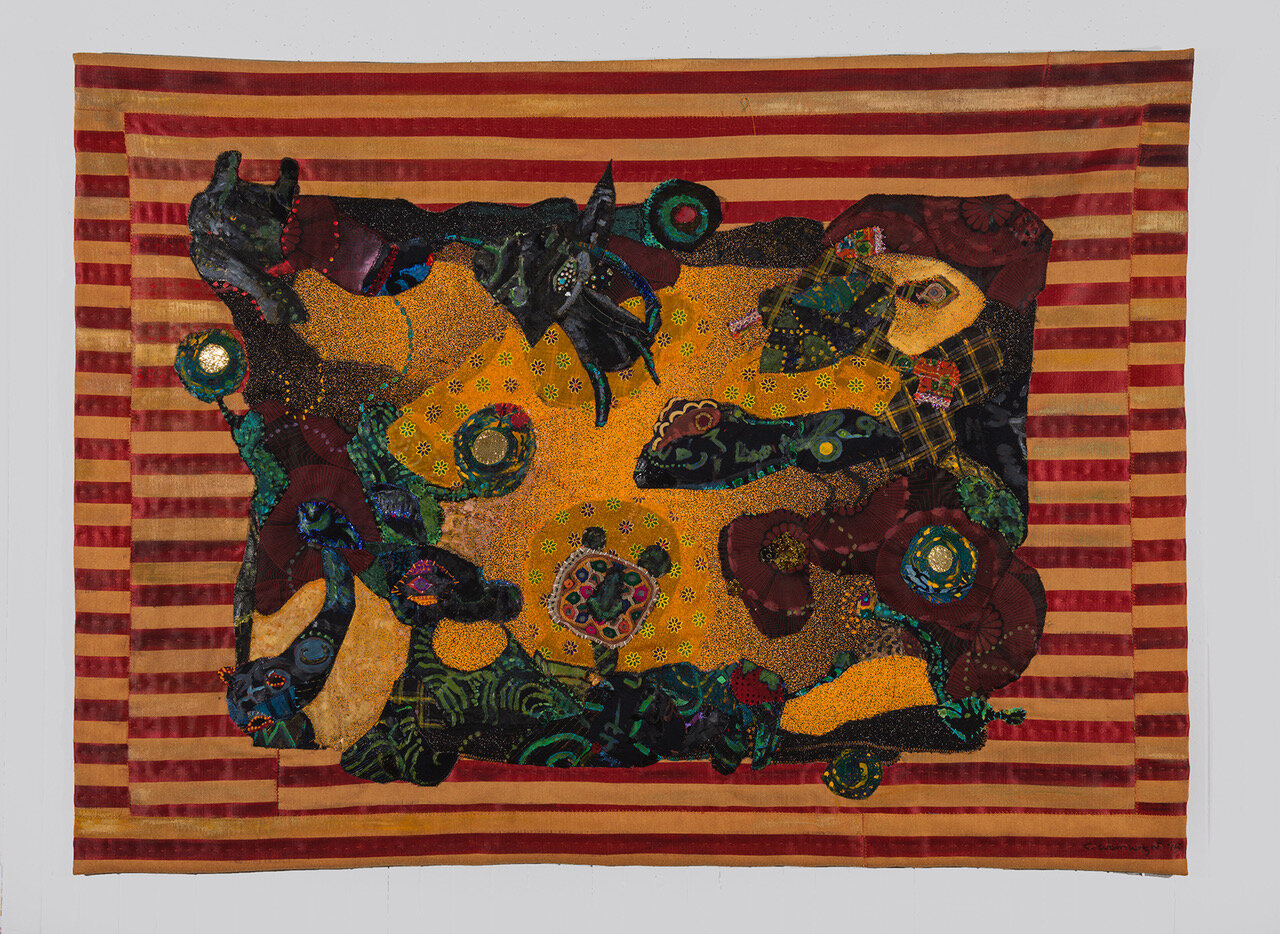
Learning from Animals
We are pleased to be exhibiting twelve of Clara Wainwright's extraordinary intricately designed and crafted quilts, Learning from Animals. Wainwright's quilts are often collaborations involving many hands while creating communities to share work and ideas. After the infamous bombing at the Boston Marathon, she initiated a large, evolving collage of the marathon path marked by Boston-area landmarks. Mending Boston brought people together to mend souls, and to talk and to honor the victims and the caring community. She took the quilt - a work in progress - for group participation to numerous locations including Boston Asian Youth Essential Service in Chinatown, the Dorchester neighborhood of 8 year old bombing victim Martin Richard, MIT – reaching out to the MIT police, Codman Square Health Center, the Gardner Museum, Gallery Kayafas and many other locations. It now resides at the Spaulding Rehabilitation Hospital.
Many of the works in this exhibit (made during the past 2 years) reference Syria and what is happening there to its people – especially the children, Wainwright remembers.
More than twenty-five years ago I took a painting class with Domingo Bareres at the Museum School and played with the idea of giving up fabric to become a painter. The following year - when I turned 50 - I decided to sew all my work by hand in an effort to slow down. I created a visual journal - one of the pages showed a black velvet woman with brocade hands. I realized then that fabric gave me magic hands and I left painting behind. It is interesting that at this point I have returned to both hand sewing and paint, merging them to explore what I hope is wisdom, earned from a long life. These quilts did not set out to learn from animals, but they became guides for my exploration.
I realize that my interest in Syria goes back to my childhood when my father used to take his family to Harpoot’s on Shawmut Avenue in the South End - a small Armenian restaurant above a pool hall. We would go into the kitchen and lift off the covers of all the pots brewing and choose what to eat. . .I particularly remember the lamb soup with an eye ball floating in it and the huge shallow bowl of mazzun - very sour yoghurt served with a very sweet piece of baklava. This food and the friendliness of the chef, Arshag Dedarian, created a fascination with the Middle Eastern world.
Mending Syria centers on the great Assyrian bas relief of the Wounded Lioness. Its materials include a beautiful old felted and embroidered wall hanging with what appears to be Arabic writing on it which I have been hoarding for years, as well as an Indian painting on fabric, created for tourists." -Wainwright
Bill Yates
Sweetheart Roller Skating Rink, 1972-73
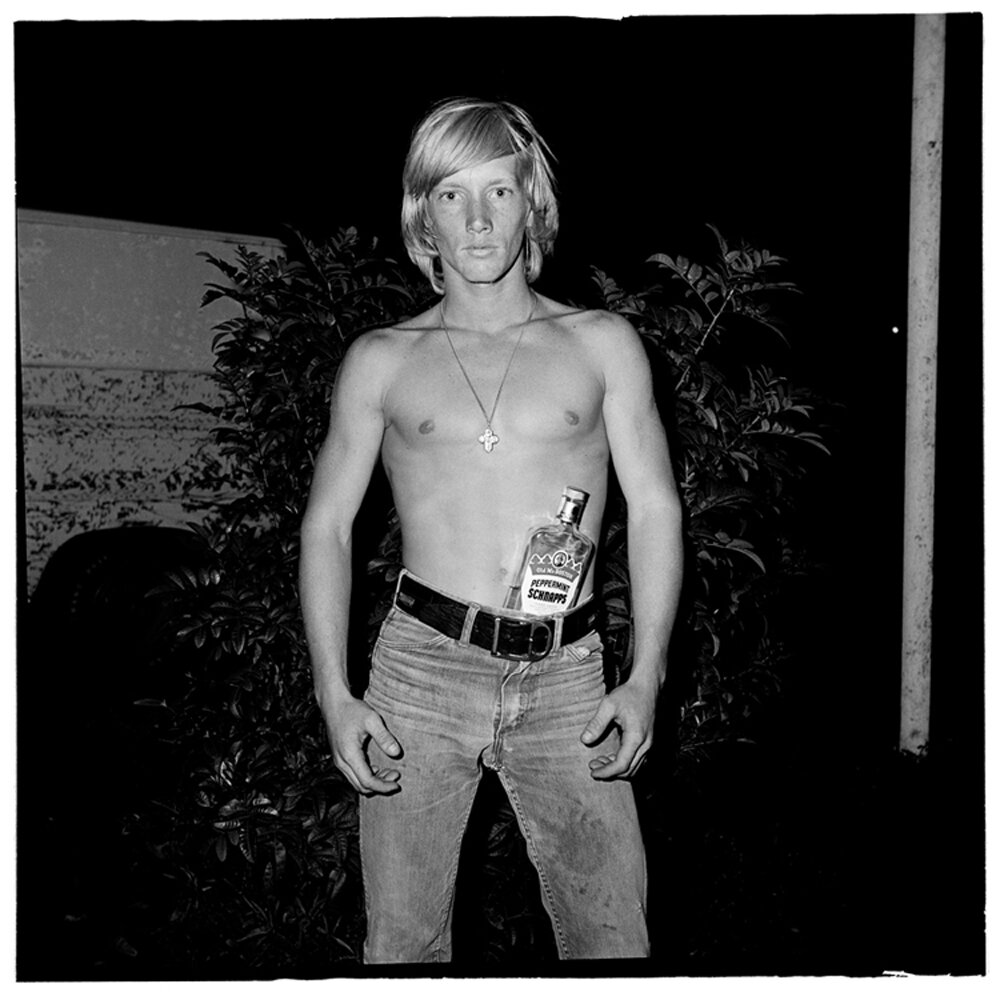

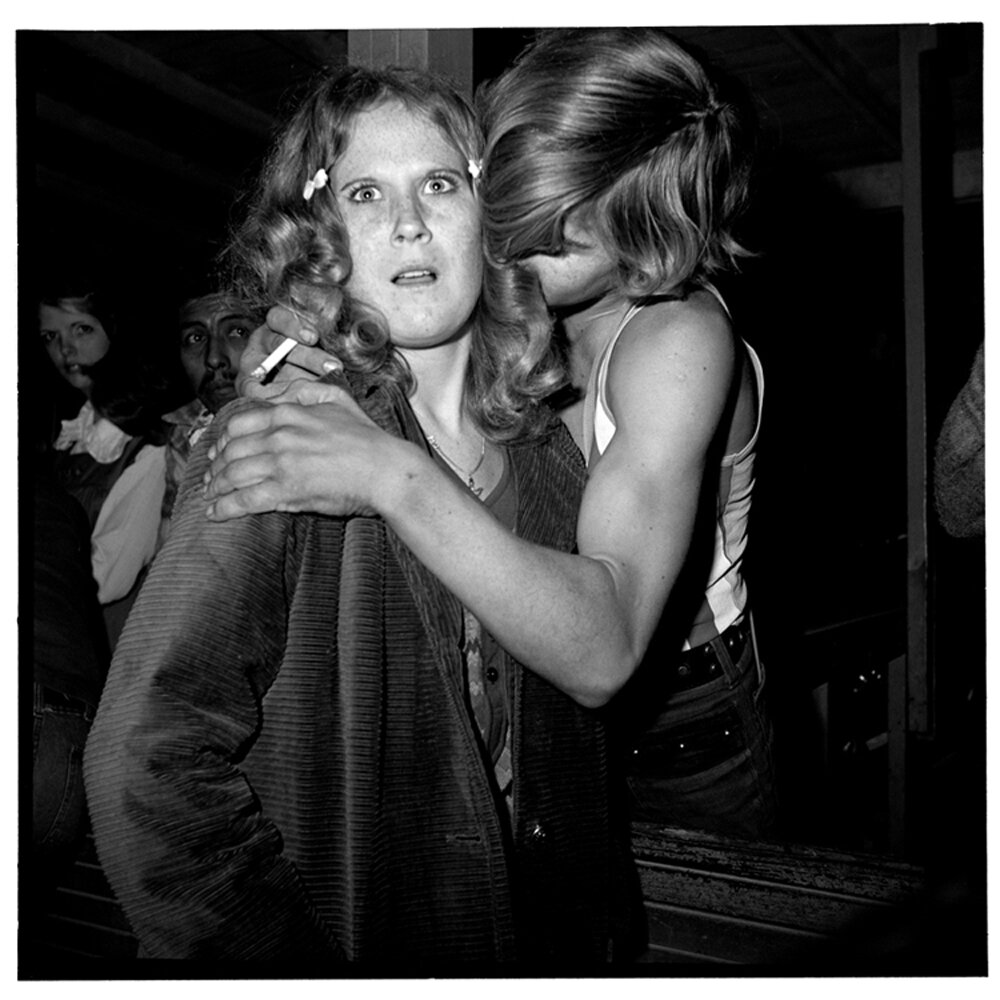
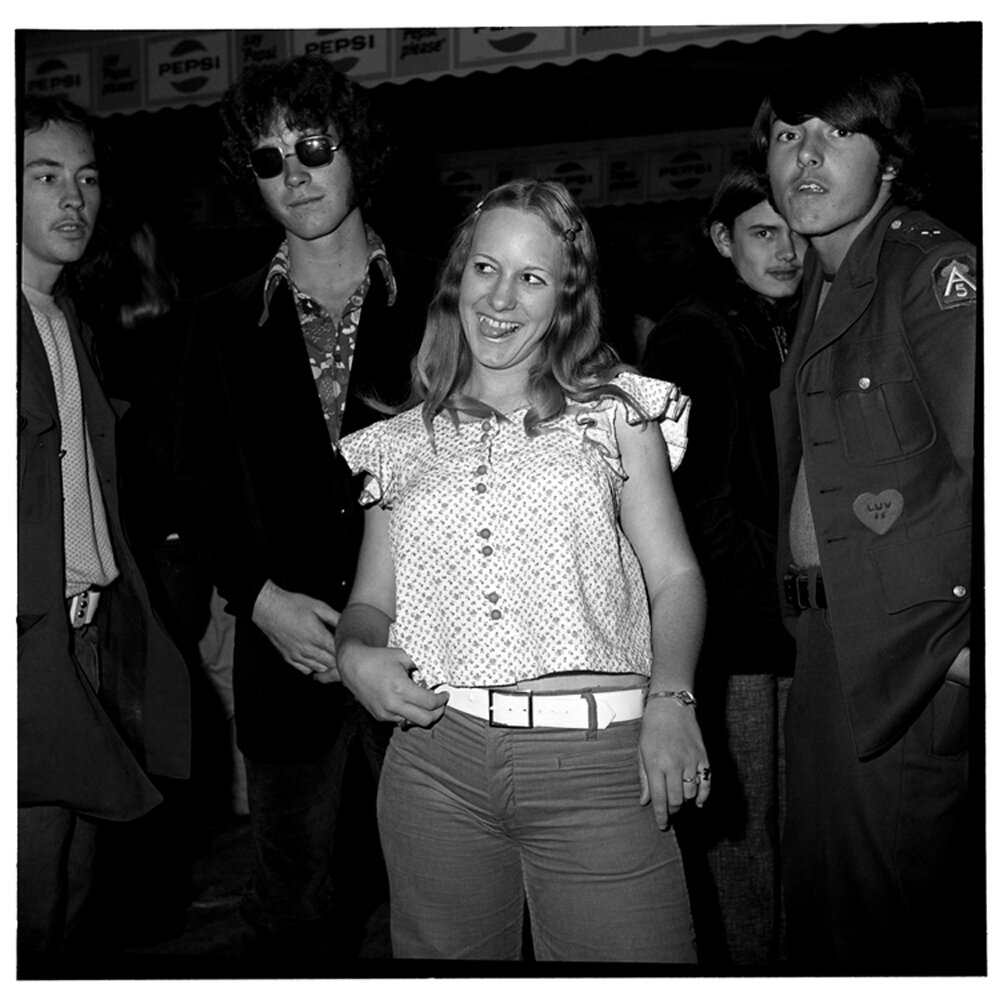
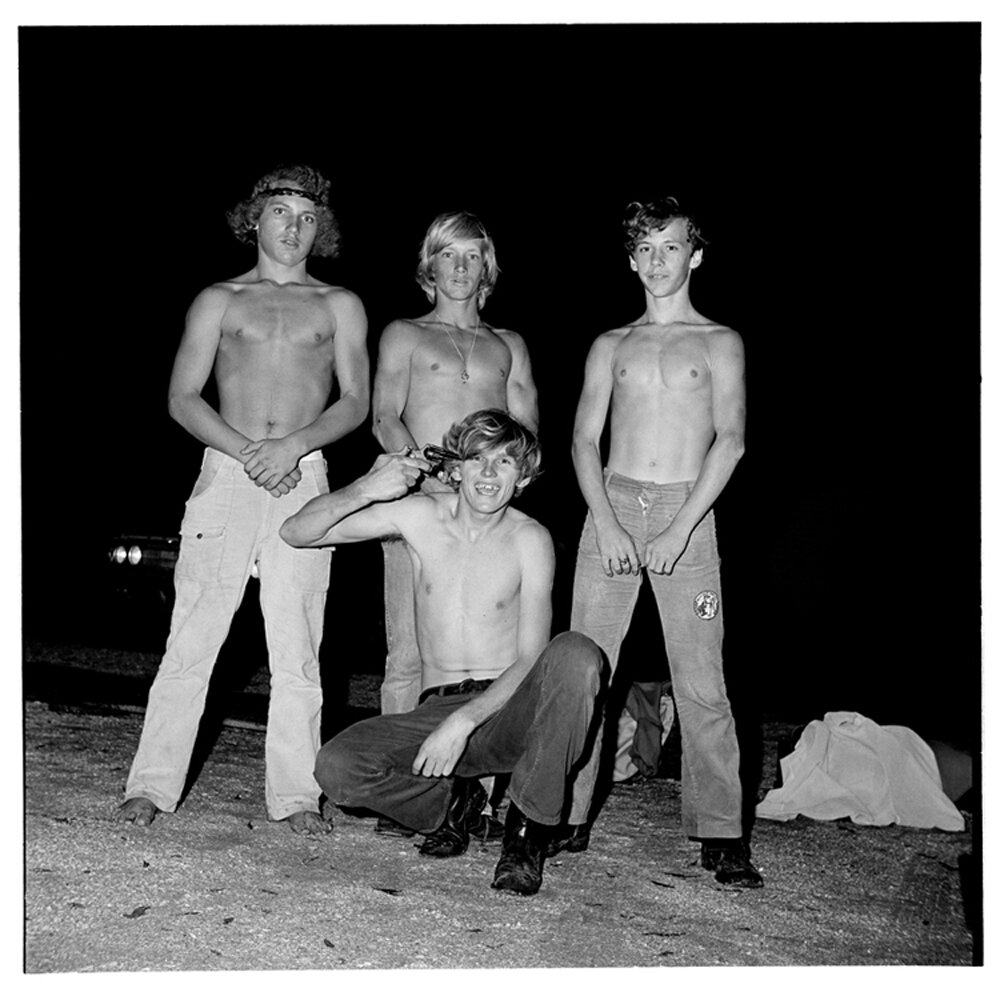
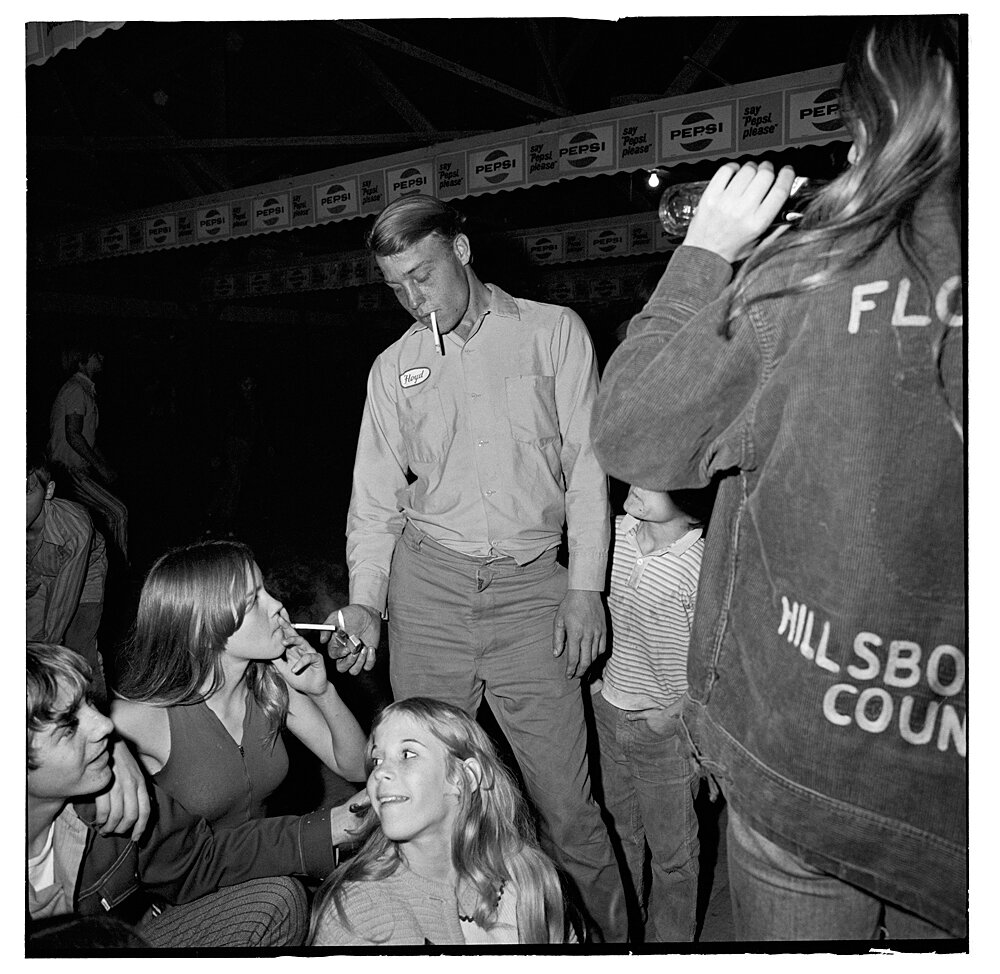
Bill Yates' images from the Sweetheart Roller Skating Rink were made more than 40 years ago from 1972-73, in Hillsborough County (Tampa, FL). These black and white photographs document the children of carnival and migrant workers and farmers as they gather socially at the roller skating rink. Yates began this project in 1972 and during the next year, returning 2 or 3 days a week, exposed hundreds of rolls of film, returning with proofs to share his results with the subjects of his interest. The images of these young people take us back in time to bell-bottoms and go-go boots, Laugh-In, and the Vietnam War. Their ages are difficult to determine, yet we see their involvement in activities and situations beyond their years. Children adopting adult behaviors – drinking, smoking, sexually provocative touching, and playing with guns. The direct flash lighting, the plethora of illuminated details, accentuates the gritty emotion in images adding to the wild excitement. By becoming an accepted and trusted part of the group, Yates was able to provide an intimate insight into their personalities and relationships revealing a view of a reality that embraces lost innocence and opportunity.
Yates graduated from the University of South Florida with a B.A. in Art and Photography and received his MFA in Photography from Rhode Island School of Design. He studied with Harry Callahan, Aaron Siskind and Garry Winogrand. Yates has exhibited at the Corcoran Gallery of Art in Washington, D.C., at the New Orleans Museum of Art, the Cummer Museum of Art & Gardens, and has an extended exhibit of this work opening at the Ogden Museum of Southern Art in New Orleans this winter. His photographs are in the collection of Corcoran and as well as other museum, corporate and private collections. He specializes in aerial and environmental abstract imagery for national corporate clients and travels extensively shooting for his blog downsouthernroads.com.
